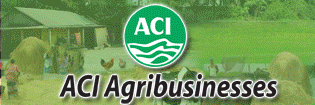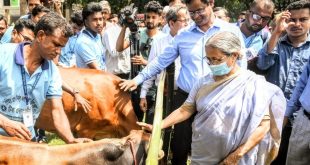A still underestimated issue in bovine
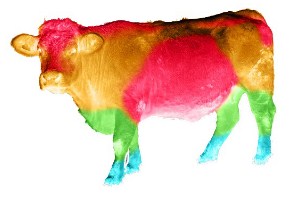 If in dairy cows, the impact of heat stress can be easily measured, seeing lower milk production, less feed intake and many more variations from their typical behaviors, in beef cattle the signs of heat stress are much less visible. Although there is less visibility, fattening cattle suffer just as much as dairy cows in warm temperatures. From 25°Conwards, the animal immediately decreases its feed intake, which then takes several days to stabilize again, even at lower temperatures. The animals increase their respiratory rate and use up energy to dissipate excess heat, which contributes to a significant increase in maintenance needs: this is heat stress.
If in dairy cows, the impact of heat stress can be easily measured, seeing lower milk production, less feed intake and many more variations from their typical behaviors, in beef cattle the signs of heat stress are much less visible. Although there is less visibility, fattening cattle suffer just as much as dairy cows in warm temperatures. From 25°Conwards, the animal immediately decreases its feed intake, which then takes several days to stabilize again, even at lower temperatures. The animals increase their respiratory rate and use up energy to dissipate excess heat, which contributes to a significant increase in maintenance needs: this is heat stress.
Susceptibility to heat stress also depends on genetic traits: for example, dark coat breeds suffer more than the light coat ones. Fat layer also plays the role of thermal shield, slowing down the dissipation of heat. Finishing cattle are also more impacted due to their smaller body surface area in proportion to their body weight.
How to assess heat stress in practice?
The temperature–humidity index, or THI, is a common indicator of heat stress risk level
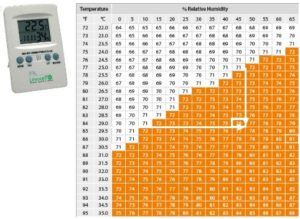
(Figure 5). This means that not only temperature is important but also the air relative humidity level, which exacerbates the effect of heat. For beef cattle, the heat stress threshold is estimated at 72 (orange zone in the THI table). This means that for example, at 50% humidity, cattle suffer from heat stress from 25°C. By placing thermo hygrometer or new generation of sensors that continuously monitor THI in the barn, producers can monitor and anticipate heat stress risks.
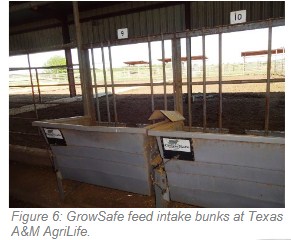 Animal observation is key to assess heat stress situation, and common indicators of moderate heat stress include:
Animal observation is key to assess heat stress situation, and common indicators of moderate heat stress include:
- Shallow breathing
- Profuse sweating
- Lethargic behavior
Then, open mouths and breathing with panting and tongue hanging out indicate more severe heat stress.
If the effects of heat stress in dairy cow are much more monitored, with well-known incidence on dairy production, other methods are necessary to measure its impact in meat cattle. This is possible for example thanks to new smart farming methods which allow real-time individual feed intake monitoring. For example, at Texas A & M AgriLife Research Center, Lallemand Ruminant Center of Excellence, the implementation of GrowSafe Feed Intake bunks (Figure 6) has allowed to show that under heat stress conditions, individual feed intake becomes very unstable. This drop in feed intake is sometimes more difficult to assess at the herd level, as it is very irregular in time from one animal to another.
This leads to decreases in growth, which can even lead to negative growth (muscle loss due to low ingestion). Beef cattle weight loss could reach up to 10 Kg.
In extreme situations, the quality of the meat may also deteriorate (higher pH at the slaughterhouse, which can impair meat ripening). Ultimately, if the animal fails to cool down, this may lead to sudden death (e. g. enterotoxaemia and heart failure).
Another, indirectly visible sign of heat stress is acidosis. Several trials performed by Lallemand Animal Nutrition using pH boluses in beef or dairy cows have shown a link between heat stress levels and low rumen pH.
In addition to performance and health, studies have also demonstrated that heat stressed animals experience increased oxidative stress combined with a lower antioxidant status. This could also have a negative impact on animal health, immune defenses, as well as meat quality.
Stabilizing the rumen with live yeast
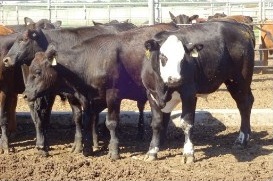

A trial conducted at Texas A & M AgriLife Research Center (Lallemand Ruminant Center of Excellence) demonstrated that, in a situation of heat stress, the addition of rumen specific live yeast Saccharomyces cerevisiae CNCM I-1077 (LEVUCELL SC) to the diet allows the rumen pH to stabilize, with less daily individual changes, and the cattle to improve their intake. Feeding behavior was also improved, with more regular intake during the day, while animals not receiving LEVUCELL SC consumed more erratically during cooler periods.
As a result, the average daily gain (ADG) was improved by 50 g/day, and the carcass weight by 5 kg over the fattening period (70 days) with a poorly acidogenic diet.
Another study conducted in Italy on a commercial farm (Consortio Agrario del Nordeste) on Charolais breed cattle showed similar results: + 5% ADG with an average thermal index THI around 70, and allowed a further understanding of the mechanisms involved (Fig. 7). By supplementing the animals with a pH bolus system, which allows measurement of the ruminal pH in real time (SMAXTEC), this trial indicate that:
- Rumen pH decreases in conditions of heat stress, linked in particular to the strong variations of feed intake and loss of saliva buffering capacity (panting).
- The live yeast stabilizes the rumen pH, especially as the animal is in a heat stress condition (Fig. 8).
Thus, ruminal pH is indirectly affected by climate conditions and the use of a ruminant specific live yeast, known for its stabilizing effects on ruminal pH (rumen modifier), allows the consequences of heat stress on feed intake and growth performance to be minimized.
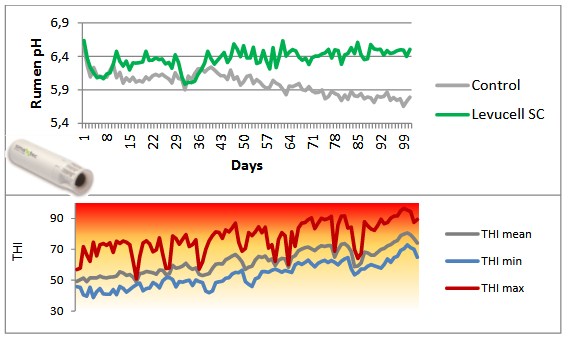
How to face heat stress in practice?
Some simple adaptation measures can be put in place for the herd when the hot mo nths are in sight:
nths are in sight:
- Check the flow of water tanks, as water supply can be limiting. As temperatures increase, water consumption also rises.
- Check sodium intake. Generally it is advisable to increase this contribution beyond the strict requirements, this in order to stimulate water intake. In Europe, an intake of 30 to 50 g / day is recommended. Also check potassium intake especially for high-grain rations (optimum intake 14 g / kg dry matter, minimum intake 8 g / kg DM).
- Ventilate the building at best as possible by creating a draft. Low openings for refreshing animals are very useful. Provide some shade.
- Concentrate the ration to limit the effects of feed intake reduction:
– At 27°C – decrease in feed intake of 4% = potential growth loss 100 g approximately.
– At 30°C – decrease in feed intake of 10% = potential growth loss 300 g approximately.
– At 35°C – decrease in feed intake of 28% = potential growth loss 800 g approximately.
- Implement an early insect repellant strategy. Flies cause a decrease in rumination.
- Feed live yeast LEVUCELL SC in “reinforced” dose as soon as the ambient temperature increases. By stabilizing the rumen pH and feed intake, LEVUCELL SC will maintain the growth potential.
- Insuring an adequate level of antioxidant solutions (vitamin A and E) is important. Providing a combination of primary antioxidants such as Selenium yeast proven for its superior bioavailability (ALKOSEL, Lallemand Animal Nutrition) and a source of vegetal Superoxide Dismutase (Melofeed, Lallemand Animal Nutrition) is shown to increase antioxidant status of animals with positive consequences on meat quality.
- Carefully monitor the heating of the ration at the trough. A trial on farmed heifers revealed an 11% decrease in intake with a ration that was heating (Dr. Kung- University of Delaware). If the ration heats, try to spread and push it more frequently. However, the most effective method is to treat the silage at harvest with a silage inoculant containing
Lactobacillus Buchneri 40788 at a rate of at least 300,000 CFU/g.
- Distributing the ration at the coolest hours of the day also promotes consumption.
- Finally, considering longer-term planning, keep in mind that the increase in ambient temperature and the increasing variability are detrimental to fattening cattle. It is advisable to plan buildings design accordingly. Easy access to water with a drinking trough for up to 10 animals is recommended. If fans and foggers may appear today as an unnecessary luxuryfor beef cattle, they however, may appear to be vital in the near future.
In conclusion, heat stress could be underestimated in beef cattle. However, it does represents a challenging period for the animals, affecting feed intake and consequently rumen conditions and efficiency. Growth performance and health can be impacted, as well as meat quality. Risk monitoring (e.g. use of temperature-humidity sensors to record THI in the barn), planning ahead (use of adapted feeding strategy, supplementations and good silage management practices) and adapted barn and herd management practices are essential to optimize production and help overcome heat stress challenges in beef.
For further information and scientific resources about the rumen and potential challenges that can be found on farm, please visit:
RuminantDigestiveSystem.com
 Agrinews24 কৃষির সাথে, কৃষকের পাশে
Agrinews24 কৃষির সাথে, কৃষকের পাশে
